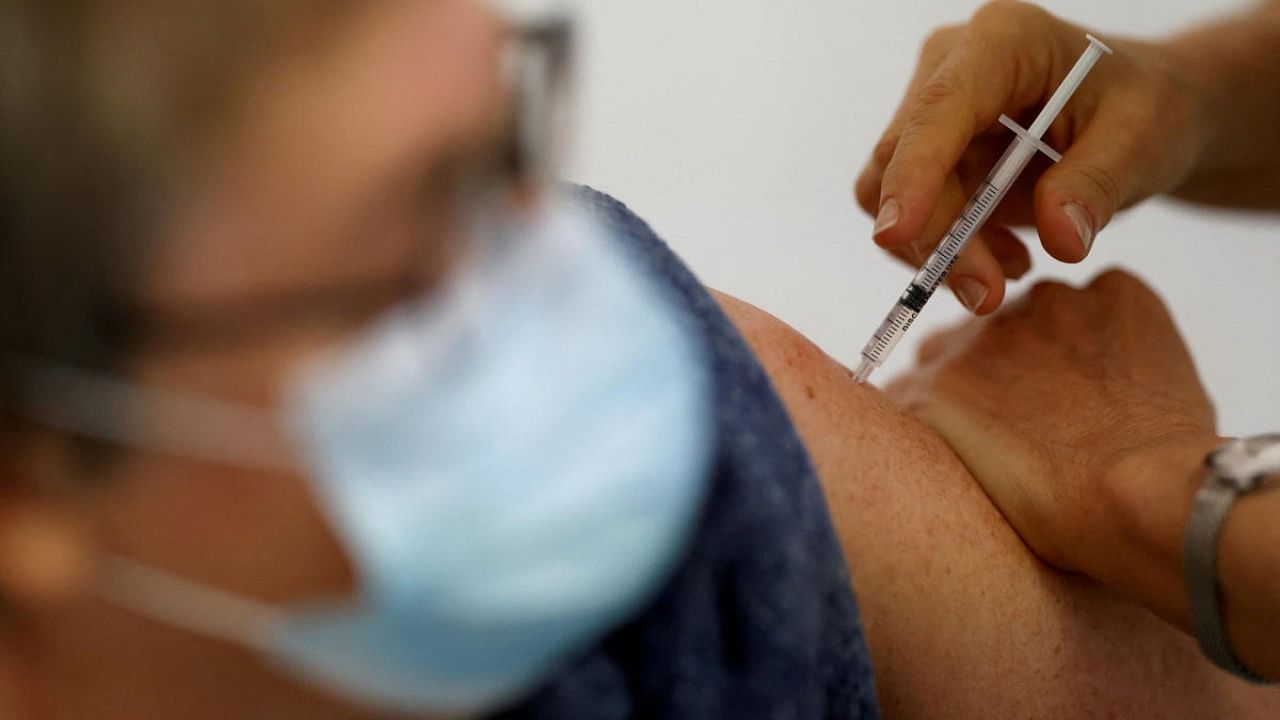
Two issues are currently grabbing the Covid-19 headlines in India: the reduction of the nine months gap for the booster dose (termed precautionary dose) to a six months gap announced on July 7, 2022, and the surge in cases possibly led by the new sub-lineage BA.2.75. While reduction of the gap has been on the card for quite some time, the Standing Technical Sub-Committee (STSC) of the NTAGI (National Technical Advisory Group on Immunisation) recommended the reduction on June 16, 2022; the final decision was likely linked to the fast-spreading BA.2.75.
Despite commendable success with the primary schedule of the Covid-19 vaccines (two doses), the uptake of boosters continues to be low. Current reports indicate that only about 8.5 per cent of those eligible (4.9 crore booster doses administered while 58 crore people are now eligible) have received the booster dose. This translates to about 3.32 per 100 persons in India. Contrast this with 37 out of 100 persons in the USA and 59 out of 100 in the UK.
We don't know enough about complacency regarding boosters
Vaccine attitudes are best understood as a continuum, ranging from total acceptance to complete refusal; vaccine hesitancy, in turn, is influenced by factors such as complacency, convenience and confidence (the 3C's). Vaccine complacency arises when perceived risks of vaccine-preventable diseases (while Covid-19 is not a traditional vaccine preventable disease, it may have become one now in the popular imagination) are low, and vaccination is not deemed a necessary preventive action. Complacency, in this case, can be attributed to the declining incidence of Covid-19 cases and the perceived success of the immunisation programme.
Complacency can ultimately translate to hesitancy as individuals weigh the risks of vaccines against the risks of diseases. Confidence barriers are about the safety and effectiveness of vaccines as well as the reliability and motivations of policymakers, while convenience barriers are about being able to get physically vaccinated in terms of time, place and affordability of immunisation services. The high coverage with two primary doses of the Covid-19 vaccines bears ample testimony to confidence and convenience issues. What we specifically need to assess at the community level at this point are two key questions: do they continue to believe that the risk of contracting Covid is high? And whether catching Covid-19, caused by the currently circulating variants/sub-variants, can negatively impact their and their close ones' lives?
Also Read | Step up efforts on third dose of Covid vaccine
The WHO's situation report of July 6
The World Health Organisation's (WHO) Covid-19 Weekly Epidemiological Update of July 6, 2022, confirmed an increase in the number of weekly cases for the fourth consecutive week, after a declining trend since the last peak in March 2022. For the South East Asia Region (including India), the weekly increase was +20 per cent for cases and +16 per cent for deaths (against the backdrop of a -12 per cent decline in global deaths). Among variants of concern (VOC), Omicron continues to dominate, accounting for 92 per cent of sequences reported to GISAID, which provides open access to genomic data. Among Omicron lineages, the proportions of BA.5 and BA.4 continue to increase globally; the proportion of BA.5 among all sequences submitted weekly to GISAID increased from 37 per cent to 52 per cent in the week of June 19-25, while the proportion of BA.4 increased by one percentage point to 12 per cent during the same week.
Studies reviewed by the WHO found reduced vaccine effectiveness (VE) of Covid-19 primary series vaccines against the Omicron variant for all outcomes (severe disease, symptomatic disease and infection) compared to those of the other four VOCs. The first booster vaccination substantially improved VE for all outcomes and all combinations of schedules. The VE declined more over time after the first booster vaccination for symptomatic disease and infection than it did for severe disease.
Also Read | Can flu virus affect SARS-CoV-2 severity?
BA.2.75: a second-generation variant
The weekly case positivity rate in India increased 10-fold in the last six weeks to the current 4.09 per cent, with 18,840 cases reported in the last 24 hours (as reported on July 9 2022). The BA.2 has been dominant in India since early 2022, and now the BA.2.75 sub-variant of Omicron has emerged as a 'second-generation variant' in India. Believed to be spreading at a very fast rate, it has nine mutations in the spike protein, including seven unique mutations. The fact that at least three different regions of the country detected BA.2.75 in the aftermath of a BA.2 wave may be suggestive of its escape immune escape capability. What is also considered significant is that BA.2.75 is the only second-generation variant of the Omicron that has spread across the globe. Previously, all other second-generation variants have only been found in a few cases within one area. At this point, it is not known whether BA.2.75 infections will turn out to be more or less severe compared to infections with other variants. The WHO has classified it under "VOC lineages under monitoring" (VOC-LUM) and continues to track it very closely.
Preventive measures, including Covid Appropriate Behaviour (CAB), completing the primary vaccination schedule and taking the booster dose (as applicable), are the key measures as the pandemic continues. Fatigue regarding CAB and complacency regarding boosters bear ample testimony to the need for reinventing and recalibrating the Risk Communication and Community Engagement (RCCE) strategies. Given India's size and diversity, this is an enormous challenge that we must rise to.
(The writer is Chairperson at the Centre of Social Medicine & Community Health, Jawaharlal Nehru University, New Delhi.)
Disclaimer: The views expressed above are the author's own. They do not necessarily reflect the views of DH.